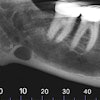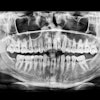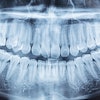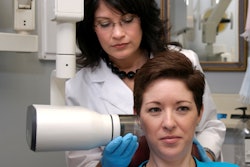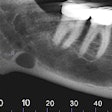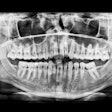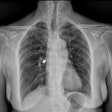
You review your schedule and see you have two new patients and a few recare patients. Your 8 a.m. new patient arrives at 8:05 a.m. for her 8 a.m. appointment -- and she did not complete her new-patient paperwork online. After 15 minutes, she is ready to come back to your operatory. You make your introduction, and you are already feeling anxious about the appointment running behind. You review her medical history and explain new-patient procedures. Your patient then states that she does not want to take a full mouth set of x-rays. What do you do next?
Determine why the patient is refusing radiographs
It is crucial to determine the patient's "why" and address his or her specific concerns. Patients have the right to refuse x-rays. However, the patient and the provider must be comfortable with the treatment recommendations. Often, patients refuse x-rays due to discomfort, insurance frequency limitations or cost, and radiation exposure.
 Tameka Schley Lee, RDH, BSDH.
Tameka Schley Lee, RDH, BSDH.Know your doctor's philosophy and office radiograph protocols
Most dentists and office protocols are based on ADA guidelines. According to the ADA (2019), clinical situations where radiographs may be indicated include but are not limited to history of periodontal disease, large restorations, implants, past endodontic treatment, carious lesions, evidence of trauma, and pain or sensitivity. An individualized radiographic treatment plan should be based on signs and symptoms and follow the as low as reasonably achievable (ALARA) principle (ADA, 2019). Completing a caries risk assessment can also determine a patient's risk factors and need for radiographs.
Point out the benefits of taking radiographs
The use of dental radiographs aids in diagnosing and treating dental problems at an early stage and can eventually save time, prevent more costly treatment, and reduce further discomfort. The dentist cannot see most diseases with the naked eye alone (clinical exam). A radiograph may expose infections in the bone, decay in between the teeth, overhang on fillings or open margins on crowns, periodontal disease (gum disease involving the bone), impacted teeth, abscesses, and certain tumors. Due to the low radiation exposure with digital radiographs in most cases, the benefits of taking radiographs outweigh the risks.
Some common scenarios are illustrated below.
Scenario No. 1: Discomfort
A 75-year-old African American man presents for a six-month recare visit:
- History of heart disease
- Chief complaint (CC): no concerns
- Takes multiple medications
- Had several large amalgam restorations and a crown replaced six months ago due to an open margin and recurrent decay
Based on the caries assessment and doctor's philosophy, you inform the patient that bitewing radiographs are a part of his recommended treatment for today. The patient states he would like to skip radiographs this visit.
You: "What concerns do you have about taking x-rays?"
Patient: "Well, I took them the last time, and they always hurt."
You: "I know that sometimes x-rays can be uncomfortable. However, I have a few tricks to make them more tolerable. Can we work together to get them done as quickly and efficiently as possible? Also, the doctor does not want to miss anything that can be caught early."
Scenario No. 2: Cost
A 42-year-old Caucasian woman presents for a new-patient appointment:
- History of periodontal disease
- CC: bleeding gums/sensitive teeth
- Takes a multivitamin
- Is a former smoker
The hygienist informs the patient that a full mouth series of radiographs will be completed. The patient states that she had a full mouth series last year, and her insurance will not cover the x-rays.
You: "I understand your concerns about the cost. Don't worry. We can complete your x-rays at a reduced cost to save you time and money today. The doctor must have radiographs to render a diagnosis and the best individualized treatment plan properly. We don't want to risk missing any possible concerns."
(Note: Please refer to your office policy.)
Scenario No. 3: Radiation exposure
A 58-year-old Hispanic woman presents for a three-month recare visit:
- History of periodontal disease
- CC: none
- History of diabetes; takes Metformin
- Had root canal treatment one year ago
The patient questions why she needs x-rays this visit.
You: "That is a great question. What concerns do you have about taking x-rays?"
Patient: "Radiation exposure."
You: "I understand your concerns about radiation. You have had several restorations in the past. My concern is that if we don't take x-rays, we may miss finding dental problems and cannot see your bone height changes. When problems are found early, it can save money, time, and discomfort. With the advanced technology of digital x-rays, there is little radiation exposure."
Patients have the right to decline treatment, and the doctor cannot provide a comprehensive diagnosis without radiographs. It is up to dental professionals to educate patients so that they understand the value of the treatment. Knowing how to validate and address the patient's concerns about radiographs is key. Know your doctor's philosophy and office policy on x-ray refusal. Finally, be confident and caring and understand that some patients will still refuse radiographs.
Tameka Schley Lee, RDH, BSDH, has been practicing dental hygiene for more than 17 years. She is passionate about oral health and improving dental health disparities. She has served in various roles, including as a clinician, dental hygiene advisory board member, clinical educator, hygiene mentor, and iTero integration specialist, and she is currently secretary of the Georgia Dental Hygienists' Association. She founded Empower, RDH, a consulting company targeting dental hygiene clinicians, with the aim of empowering and inspiring to elevate leadership, productivity, and patient experience.
The comments and observations expressed herein do not necessarily reflect the opinions of DrBicuspid.com, nor should they be construed as an endorsement or admonishment of any particular idea, vendor, or organization.
